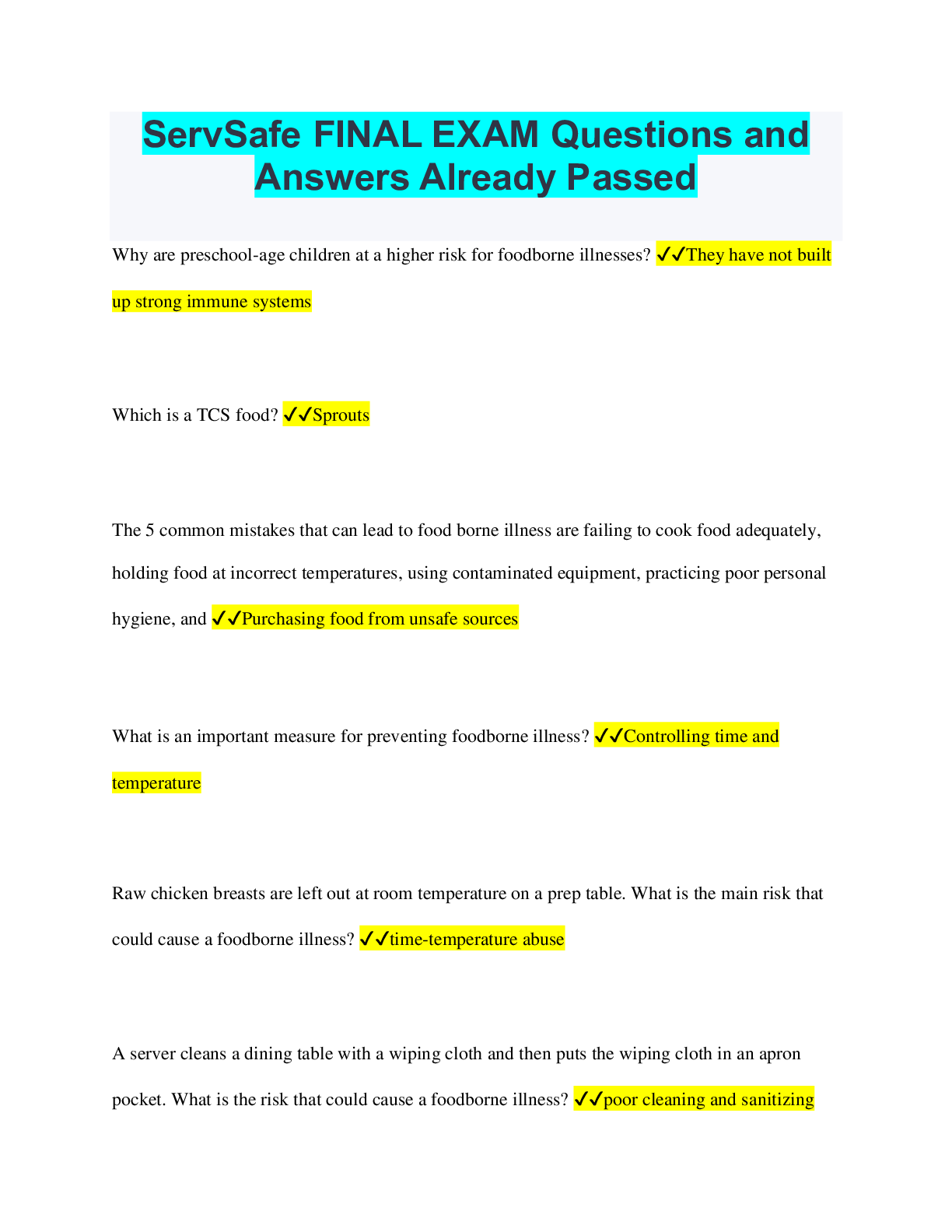BioChemistry > EXAM > Explore Learning: GIZMO. Student Exploration: Meiosis. Vocabulary: anaphase, chromosome, crossover, (All)
Explore Learning: GIZMO. Student Exploration: Meiosis. Vocabulary: anaphase, chromosome, crossover, cytokinesis, diploid, DNA, dominant, gamete, genotype, germ cell, haploid, homologous chromosomes, interphase, meiosis, metaphase, mitosis, ovum, phenotype, prophase, recessive, sister chromatid, sperm cell, telophase, zygot.
Document Content and Description Below
Name: Ananda Flemings Date:November 6th 2019 Student Exploration: Meiosis Vocabulary: anaphase, chromosome, crossover, cytokinesis, diploid, DNA, dominant, gamete, genotype, germ cell, haploid, ho... mologous chromosomes, interphase, meiosis, metaphase, mitosis, ovum, phenotype, prophase, recessive, sister chromatid, sperm cell, telophase, zygote Do these BEFORE using the Gizmo.) 1. During mitosis, a single cell divides to produce two daughter cells. What must happen in the original cell so that each of the daughter cells has a complete set of The DNA must replicate 2. During sexual reproduction, two sex cells fuse to create a fertilized cell with a complete set of chromosomes. What must be true about the number of chromosomes in each sex cell? There must be 2 one x and one y or both X. Gizmo Warm-up Meiosis is a type of cell division that results in four daughter cells with half as many chromosomes as the parent cell. These daughter cells mature into gametes, or sex cells. In the Meiosis Gizmo, you will learn the steps in meiosis and experiment to produce customized sex cells and offspring. On the STEPS tab, click Male. You are looking at a germ cell, or a cell that will undergo meiosis to become gametes. 1. Read the description of interphase at the bottom of the Gizmo. What happens to the cell at the beginning of interphase? The cell grows in size and doubles its organelles. 2. Click on the DNA in the nucleus of the cell. Describe what happens. The DNA duplicates and allows the cell to continue to grow 3. Why is it necessary for the cell to grow and duplicate its DNA before the start of meiosis? Because when a parent cell undergoes mitosis it divides into two daughter cells and they all need DNA thats why before mitosis takes place there must be a duplicate of the DNA. Introduction: Unlike mitosis, which produces two identical daughter cells from one parent cell, meiosis creates four unique daughter cells with half the amount of DNA as the parent cell. 1. Observe: (Prophase I) Click on the nucleus to break it down then click on the DNA to condense it into chromosomes. Drag the centrosomes to the top and bottom of the cell. A. How many chromosomes does this cell have? 2 Each chromosome consists of a pair of sister chromatids, two identical strands of DNA that formed when DNA replicated during interphase. B. On the image to the right, draw two lines connecting the pairs of (chromosomes of similar size with a matching set of genes). In the Gizmo, drag the homologous chromosomes together. Click Continue. 2. Observe: (Metaphase I and Anaphase I) - Drag the groups of homologous chromosomes to the metaphase plate, then drag spindle fibers from each of the centrosomes to the chromosomes. Click the centrosome to pull the chromosomes apart. How do the chromosomes separate in anaphase I? The centrosomes attach spindle fibers to each mom the chromosomes to pull them apart and to opposites sides of the cell. 3. Compare: An image of the anaphase step in mitosis is shown to the right. A. How does anaphase I in meiosis differ from anaphase in mitosis? key difference between mitosis and meiosis is that sister chromatids remain joined during ! anaphase I in meiosis , whereas in anaphase of mitosis they separate. B. At the end of anaphase I (meiosis), how many chromosomes are on each side? 2 4. Observe: Telophase I and cytokinesis are the final steps of the first half of meiosis. A. Describe what happens when you click on the chromosomes during telophase I. The nuclear membrane re-forms around the chromosomes and they begin to unravel. B. Click and drag on the contractile ring. Describe what happened during cytokinesis. A contractile ring forms at the equator of the cell pinching the membrane inward and creating a cleavage furrow, resulting in two daughter haploid cells. 5. Observe: Go through the steps of the second half of meiosis until you reach the end of telophase II, following the instructions at the top right corner. As you proceed, answer the questions below. Use the Back button if you need to see a step again. A. Before prophase II begins, does the DNA in the cell duplicate itself? no B. During metaphase II, do homologous chromosomes pair up as in metaphase I?no C. How does anaphase II differ from anaphase I? In Anaphase II, sister chromatids are pulled apart in Anaphase I, homologous chromosomes are pulled apart, in Anaphase II, centromeres break apart D. At the end of anaphase II, how many chromatids are on each side of the cell? 2 E. After cytokinesis, how many cells have been formed from the parent cell? 4 F. Are all of the cells the same size? yes The original parent cell is called diploid because it contains a complete set of homologous chromosome pairs. Each of the four daughter cells is meaning that each contains half of the original parent cell’s chromosomes. Each daughter cell contains one chromatid from each homologous pair. 6. Observe: Click on the spermatids. Spermatids that formed from meiosis will develop into mature male gametes called . Sketch a mature sperm cell in the space to the right. Mature sperm cells have only a small amount of cytoplasm and use their flagella, or “tails,” to propel themselves forward. Sperm are designed for one purpose, to deliver genetic material to the egg cell during fertilization. : Although both male and female gametes contain genetic material from the parent organism, they perform different functions. A male gamete delivers genetic material to a female gamete. The fertilized female gamete, called a zygote, then grows into the offspring. 1. Compare: Click on the Female button. For the female cell, proceed through meiosis until you reach the end of anaphase I. Up to this point, did you notice any differences between the development of male and female gametes? no Explain. 2. Compare: Proceed through telophase I and cytokinesis I. A. What do you notice about the size of the two resulting cells? One is bigger than the other. B. How does this compare to the two cells at the end of telophase I and cytokinesis I in male cells? The male cells were the same size but the female cells are two different sizes. 3. Compare: Continue through meiosis until you finish telophase II and cytokinesis II. A. What do you notice about the four cells now? All 3 of the cells are the same size an their is one larger one B. What is the largest cell called? Ovum The ovum is the largest cell in the human body. In contrast, the sperm cell is the smallest cell in the human body. C. What are the small cells called? Polar bodies Polar bodies are small cells that develop as a byproduct of meiosis in females. In humans and most other animals, these cells play no significant role and soon die. 4. Think and discuss: Why do you think egg cells are large and sperm cells are small? Egg cells are considerably larger than sperm cells because they carry the cytoplasm and organelles necessary for cell division and growth to begin, while sperm cells are basically a cell nucleus and a tail. Introduction: The activities above shows that organisms can produce at least four different gametes. In reality, organisms can produce millions of genetically unique gametes. Question: How can meiosis create an unlimited number of unique gametes? 1. Experiment: Use the following abbreviations for the chromosomes. Dark green – DG; Light green – LG; Dark purple – DP, Light purple – LP. Choose a Male or Female cell. A. Proceed though meiosis to anaphase I. Which chromosomes went up and which went down? Up: DG,DP Down: LG,LP B. Click Back and run anaphase I again a few times. Did the results ever change? C. Chromosomes are distributed randomly during anaphase I. What are the possible chromosome combinations in the two daughter cells? (Use DG, LG, DP, and LP.) DG,DP,LG,LP,DP,LP,LG,LP 2. Experiment: Click Reset. Choose a Male or Female cell. Proceed through meiosis until the chromosomes are condensed in Prophase I. Drag the LG (light green) chromosome to the Allele map on the left. This shows the alleles (or variations of a gene) that are present on the chromosome. A genotype is a list of alleles. The genotype of the LG chromosome, for example, is EEFFGGHHJJ. A. What are the genotypes of the remaining chromosomes? DG: EEFFGGHHJJ LP: AABBCCDD DP: aabccdd B. After moving the centrosomes, drag the pairs of homologous chromosomes together. Click on a chromosome. What happens? same EEFFGGHHJJ the alleles stay the When homologous chromosomes are paired up, they can exchange sections. This exchange of genes is called a crossover. C. Click on several segments to create crossovers, and then click Continue. Proceed to anaphase I. Drag each chromosome to the Allele map and write its genotype. 3. Think and discuss: In this Gizmo, only one crossover is allowed in each segment. In reality, crossovers can occur at almost any point along the chromosome. How do the random distribution of chromosomes and crossovers create more variation in the resulting gametes? Crossing over takes place during meiosis I when two non-sister chromatids exchange DNA material. Approximately two or three crossovers occur on a single chromosome. This exchange of genetic material can happen many times within the same pair of homologous chromosomes, creating unique combinations of genes. 4. Explore: Meiosis is a complicated process. What happens when something goes wrong? A. Click Reset and choose a male or female cell. Click Skip. Describe what would happen if meiosis occurred without DNA replication. When the cells begin to separate there are cells that do not have any genetic material, due to the fact that there is not enough DNA to be shared. B. Click Back. Proceed through meiosis until the chromosomes are lined up along the metaphase plate. Click Skip. Describe what would happen if the chromosomes did not attach to spindle fibers during metaphase I. The chromosomes would split with their homologous pair and condense and when separating into four daughter cells would separate from their homologous pair and each chromatid would be in one of four cells. C. Click Back. Proceed through meiosis until the chromatids are connected to spindle fibers at Anaphase II. Click Skip. Describe what would happen if sister chromatids were not pulled apart at anaphase II. The chromosomes would condense with their homologous partner and then separate with a mx of different DNA into four haploid cells. D. Click Back. Proceed through meiosis until cytokinesis II. Click Skip. Describe what would happen if cytokinesis did not occur. If cytokinesis does not occur, the cell does not split into two, which results in a cell with two nuclei and double the amount of genetic material. During meiosis, there are checkpoints that stop cell division if anything goes wrong. However, these checks do not always work. Abnormal cell division during meiosis can lead to genetic disorders. Trisomy 21 (Down syndrome), for example, occurs when there is an extra copy of chromosome 21 in one of the sex cells. Introduction: Earlier, you learned how crossovers can result in genetically diverse gametes. In this activity, you will perform crossovers in parent cells undergoing meiosis and combine the resulting gametes to produce offspring with specific genotypes. 1. Explore: The EXPERIMENTATION tab shows a simplified fruit fly genome, with a single pair of homologous chromosomes. Each chromosome has genes that control wing shape, body color, antenna type, and eye color. The uppercase alleles are dominant and the lower case alleles are recessive. The allele key is given at lower left. (Note that real fruit flies have eight chromosomes and many more genes.) A. Click Reset. Without creating any crossovers, click What are the possible genotypes of the gametes? 8 B. Drag a gamete from each parent into the box below to create a zygote. What are the different combinations of possible offspring genotypes? There are 9 different combinations C. Click Show phenotype for each combination. What are the resulting phenotypes? A fruit fly with red eyes and a light brown skin tone 2. Experiment: Click Reset. You can create crossovers by clicking on the middle chromatids in each of the parent cells. A. Create a gamete with the genotype C b l r. First, click on the c gene in one of the parent cells to create the crossover. ! Did you create a gamete with the genotype C b l r? yes B. Click Reset. Create a gamete with the genotype: c b L R. How many crossover were needed to create this gamete? 3 When a crossover occurs, the entire portion of genetic material is swapped between the two homologous chromosomes, so gene C is swapped along with gene B and gene R is swapped along with gene L. C. Click Reset. Create a c B L r gamete. How many crossovers were needed? 4 3. Challenge: Select the Challenge radio button. Make sure that is selected in the dropdown menu. Target offspring 1 is a fruit fly with normal wings (cc), a black body (bb), normal antenna (ll) and red eyes (Rr). Because the offspring receives one chromatid from each parent, each chromatid should come from a different parent. A. Using the Gizmo, create a fruit fly with the correct genotype. Explain how you did it. I created a crossover between little c and big C and kept the little b’s the same so that the fruit fly would have a black body. Then I created Rr for red eyes on parents 1 and took from parent to little c little b and little r. So only really changing parent one. B. Is there another way to get the correct phenotype, but not the correct genotype? Explain. Same phenotype but different genotype is possible due to presence of dominant allele. A dominant allele , when present in genotype, always expresses itself: both in double dose and in single dose. 4. Challenge: Use the dropdown menu to switch to the next target offspring. While creating target offspring 2-5, fill out the table below. To produce target offspring 5, why were two crossovers needed on one chromatid arm? To create a small r and a large L 5. Think and discuss: Suppose there are two homologous chromosomes. Each chromosome contains a single mutant allele in different parts of the chromosome. How can crossovers be beneficial in this situation? (Hint: How can you create a single, mutation-free chromosome?) By crossing over the mutant alleles to cancel them out and have a more dominant gene take over. [Show More]
Last updated: 1 year ago
Preview 1 out of 12 pages
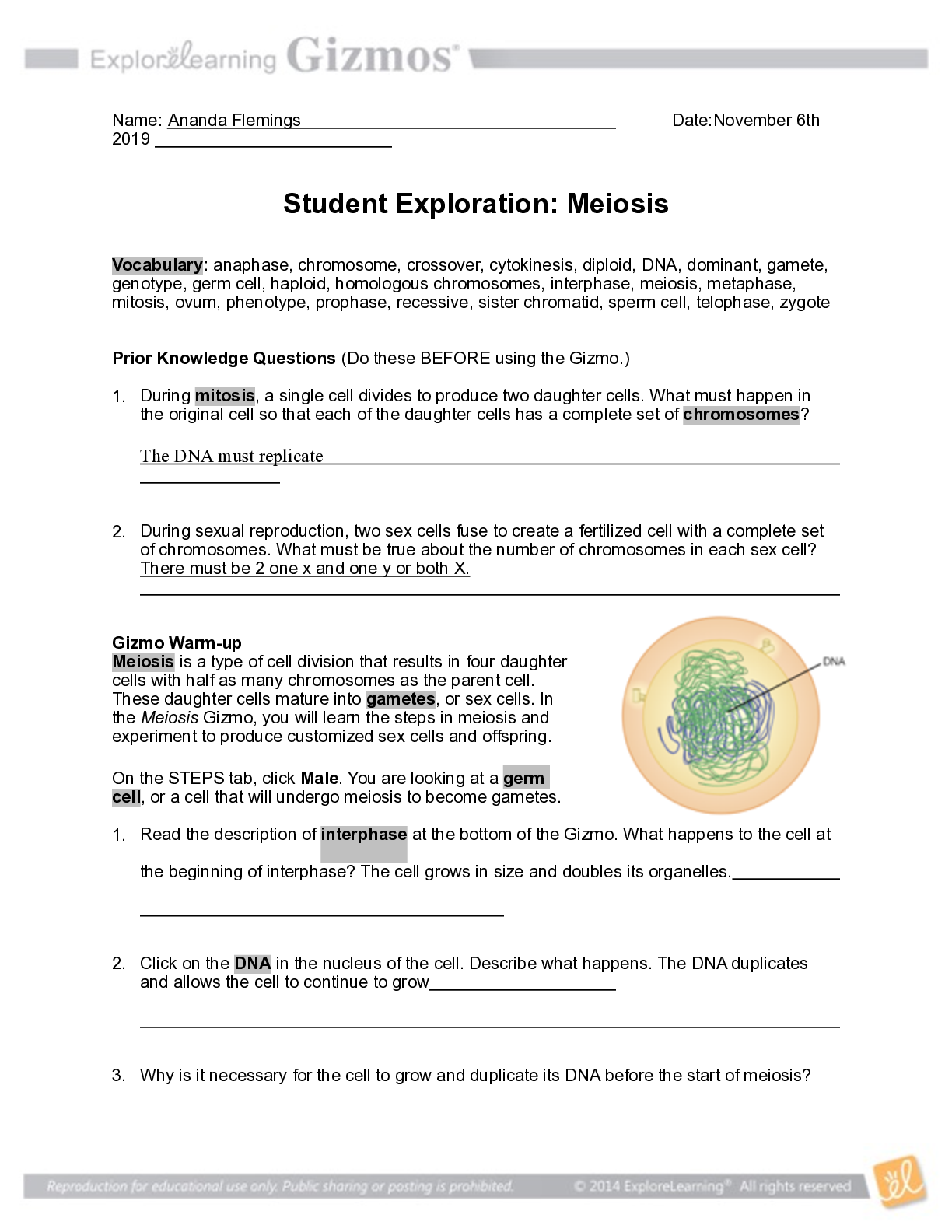
Reviews( 0 )
Document information
Connected school, study & course
About the document
Uploaded On
Dec 30, 2020
Number of pages
12
Written in
Additional information
This document has been written for:
Uploaded
Dec 30, 2020
Downloads
0
Views
486


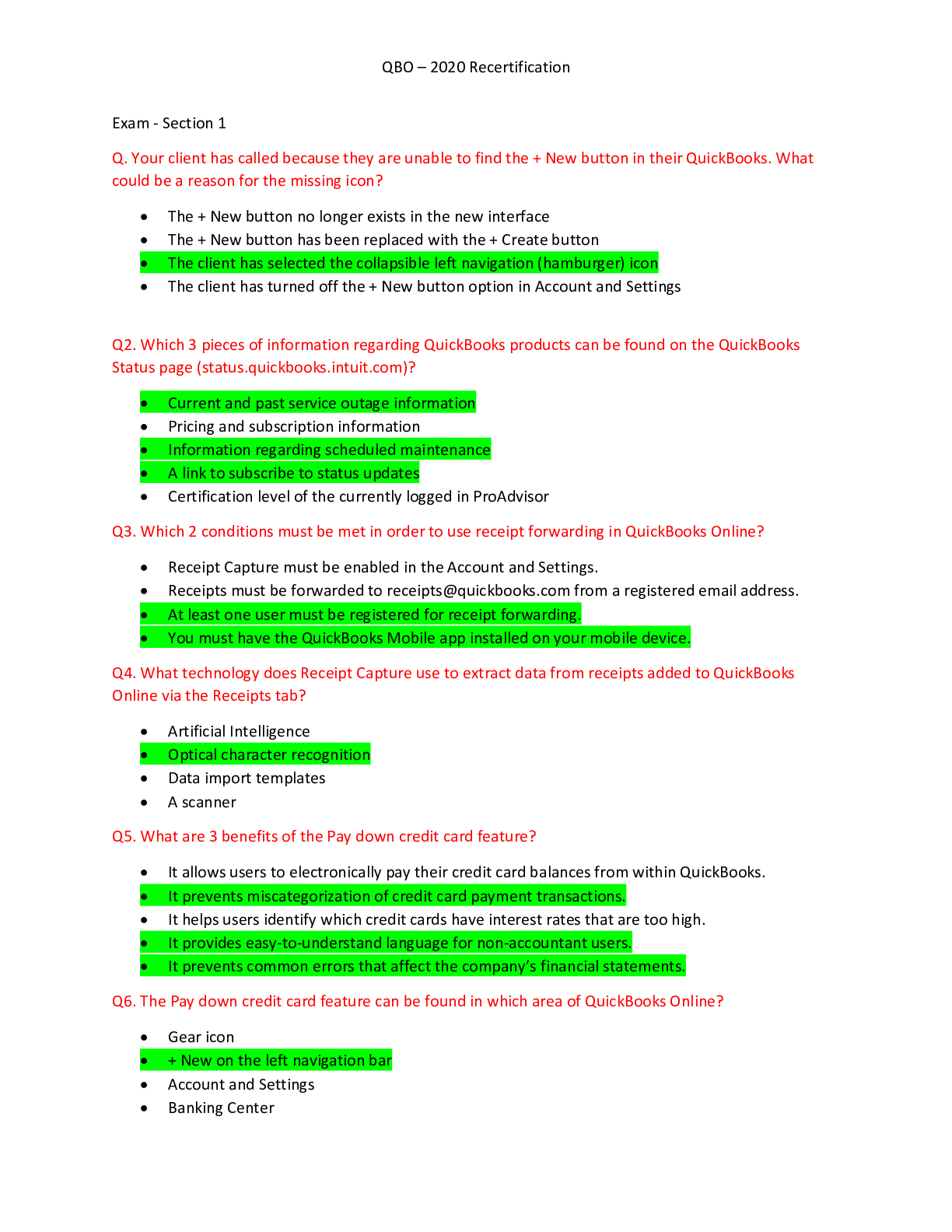
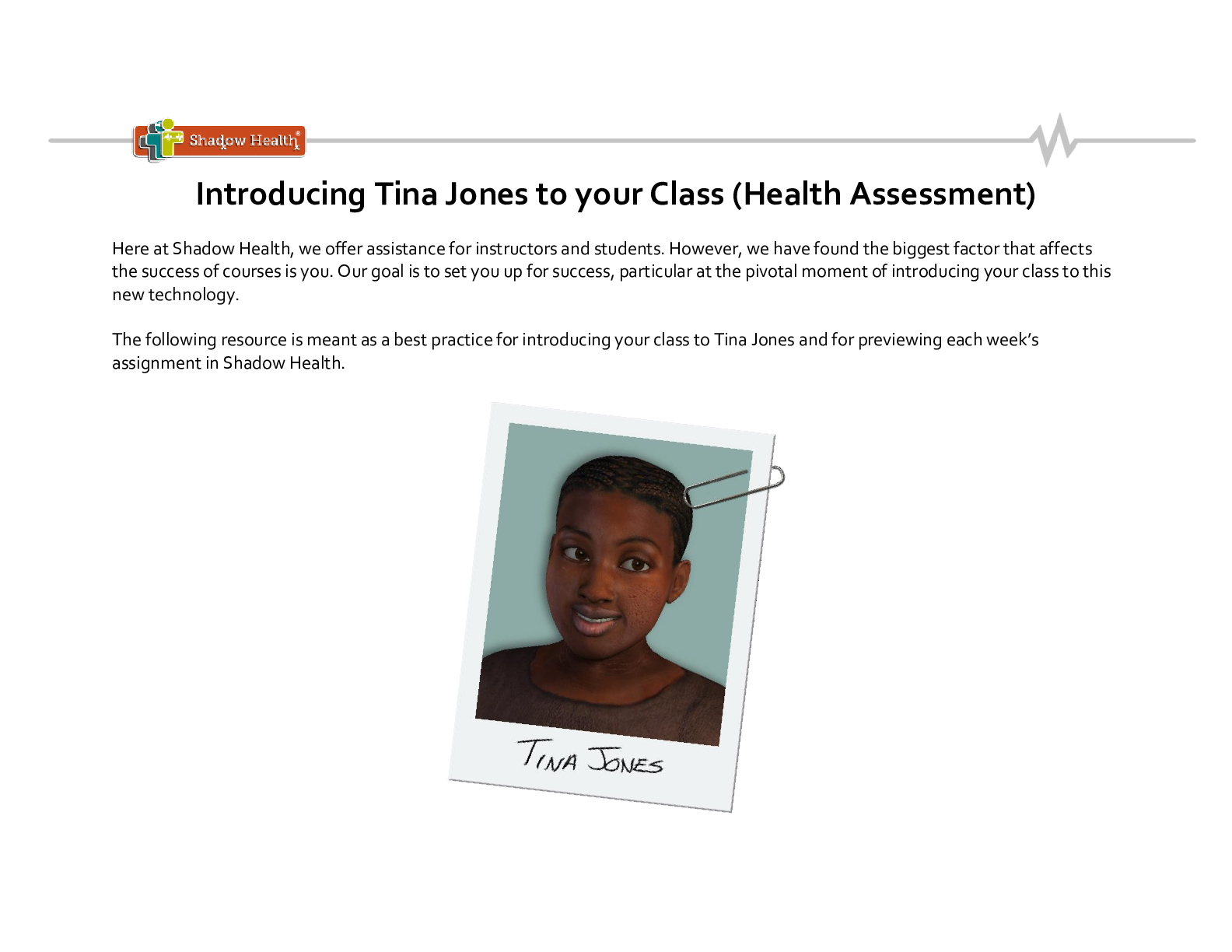


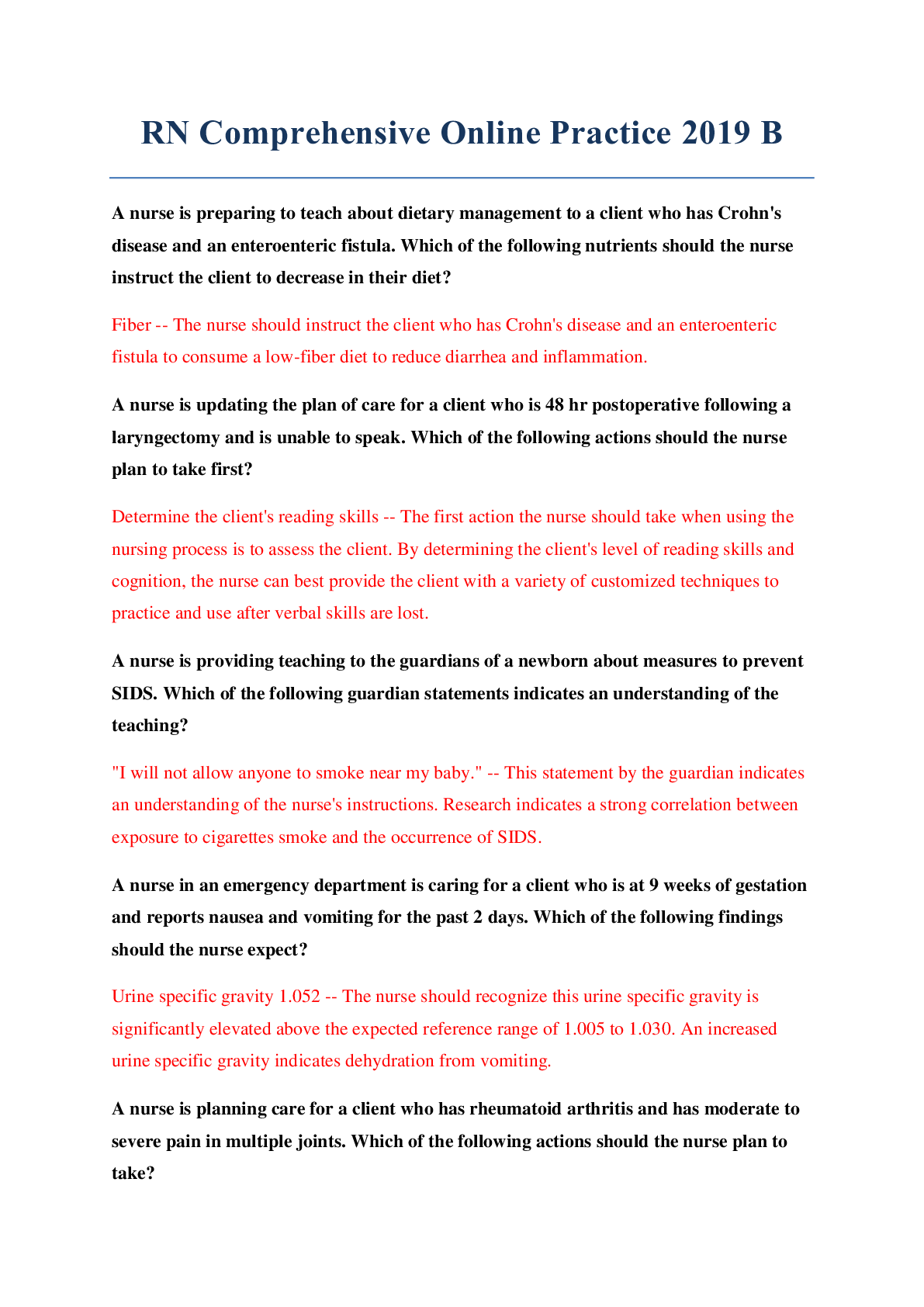



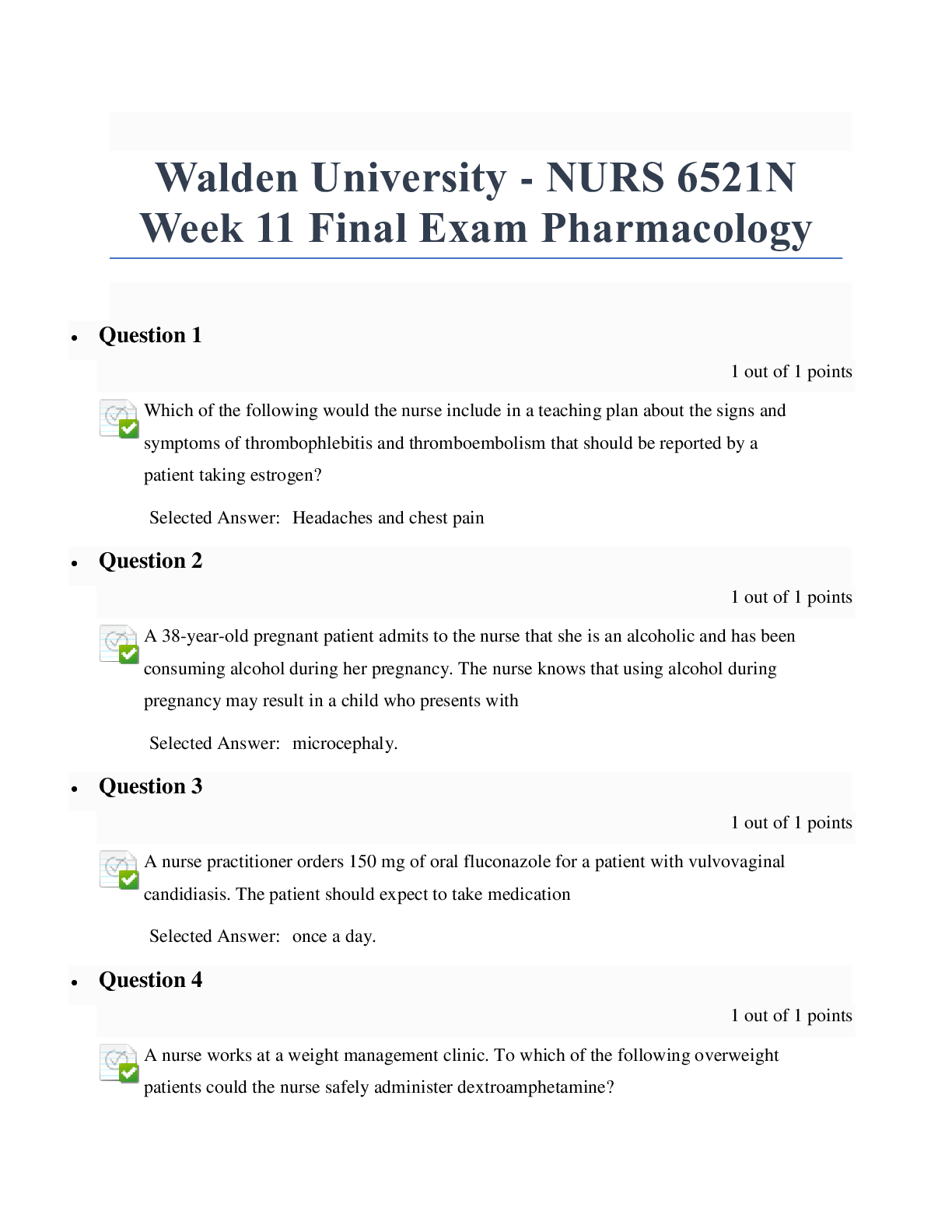

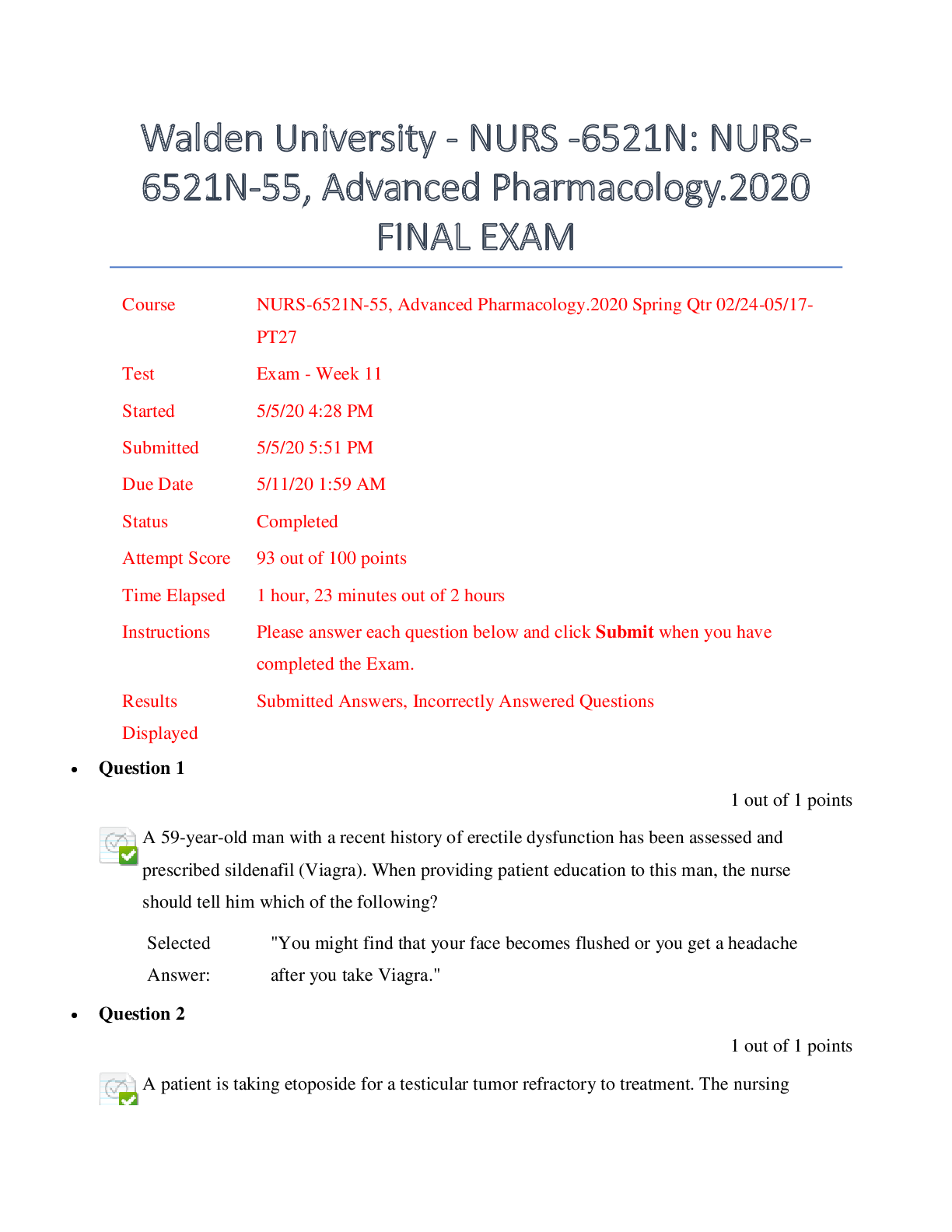


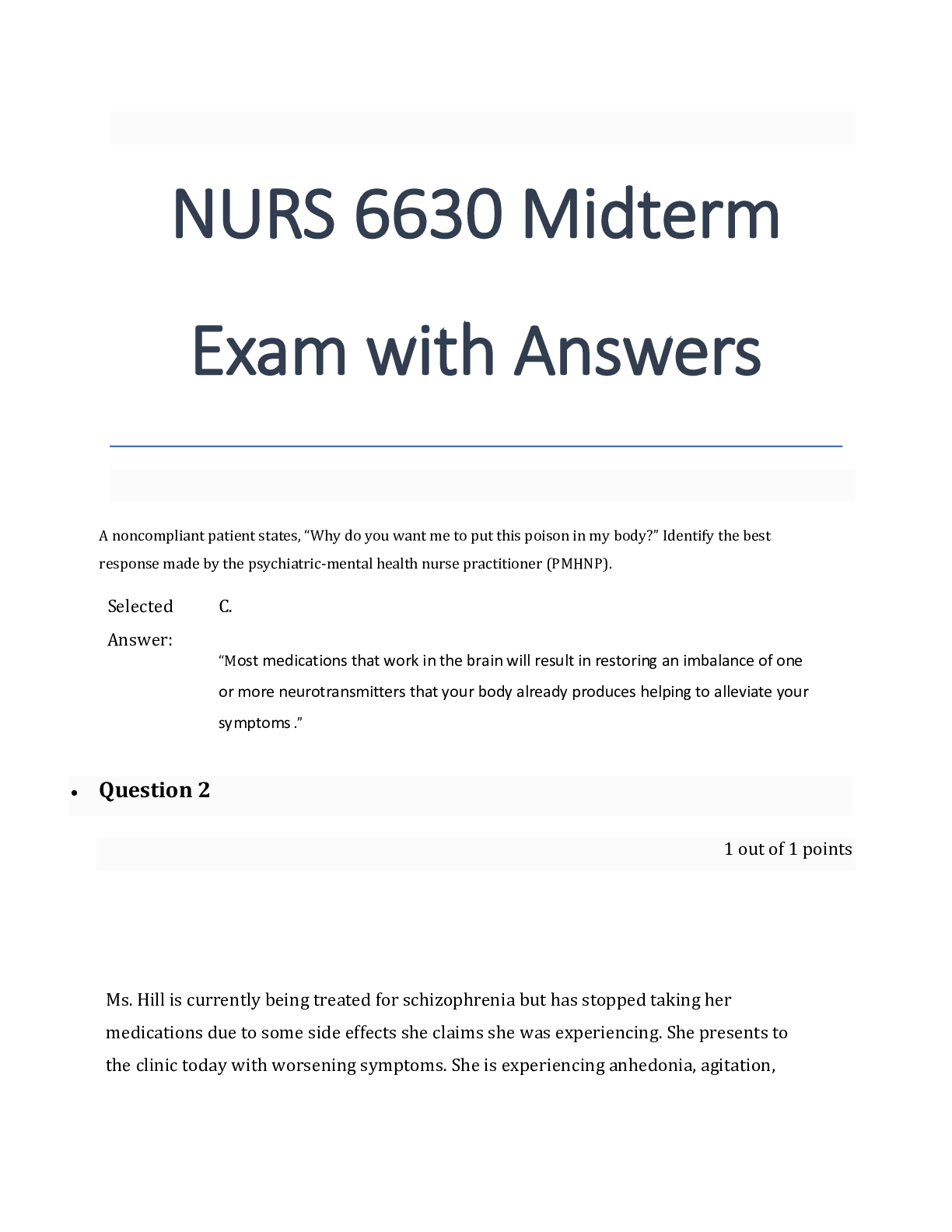

.png)
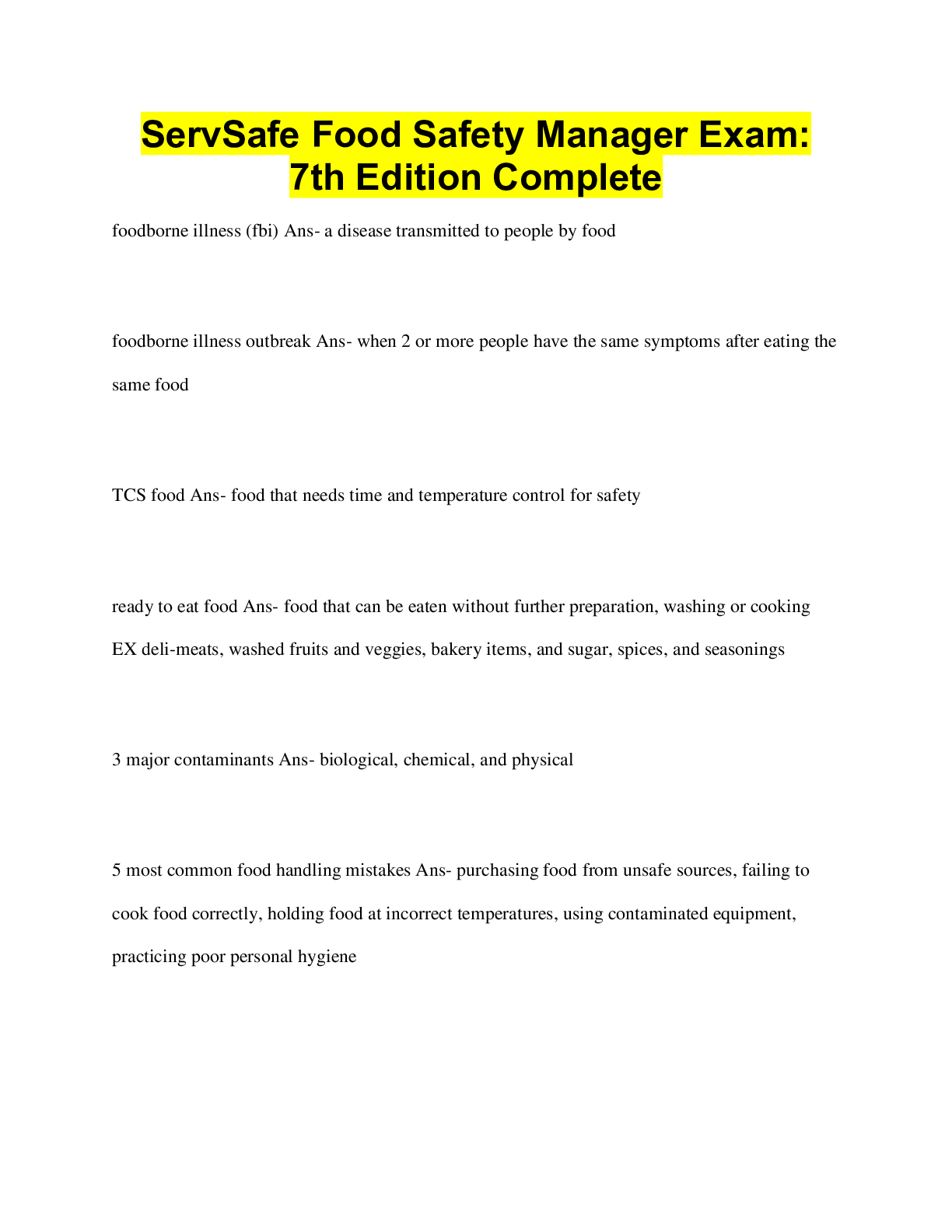
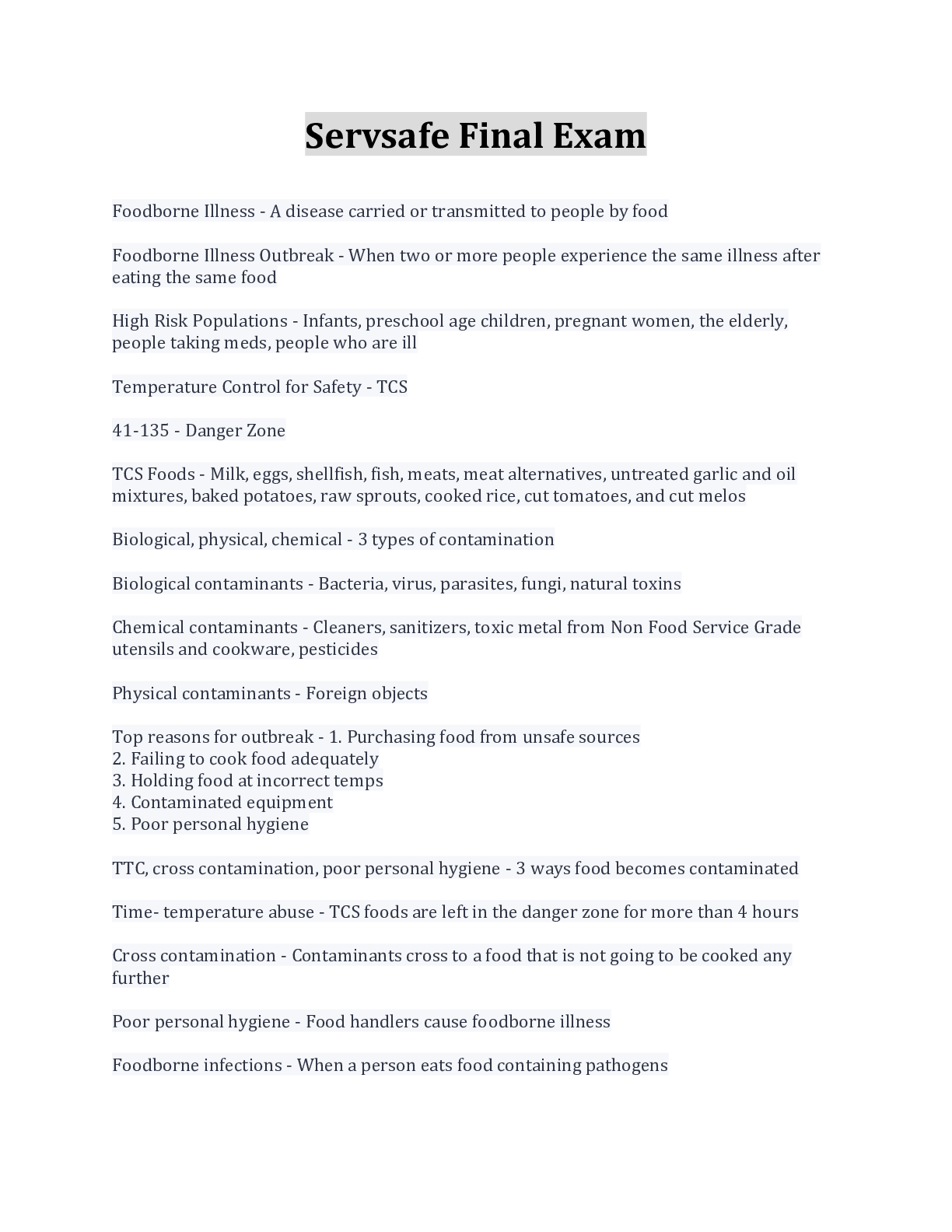
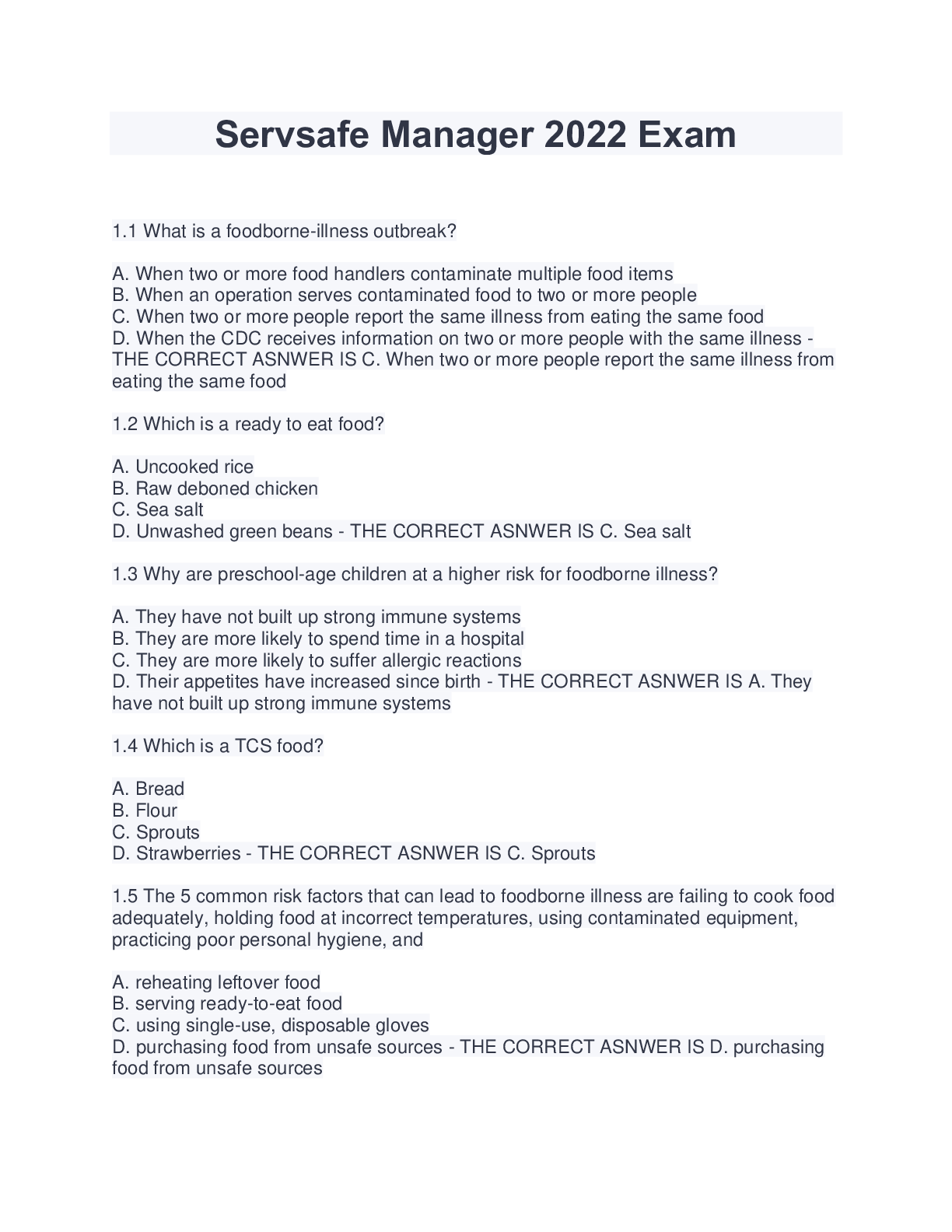

.png)


.png)
